<> Cethosia cyane (Drury, 1773) <>
the Leopard Lacewing ผีเสื้อกะทกรกธรรมดา
Click on any photo to see all photos full size in Lightbox
Additions and corrections to the information provided on this page is always welcome. Please use the Contact form.
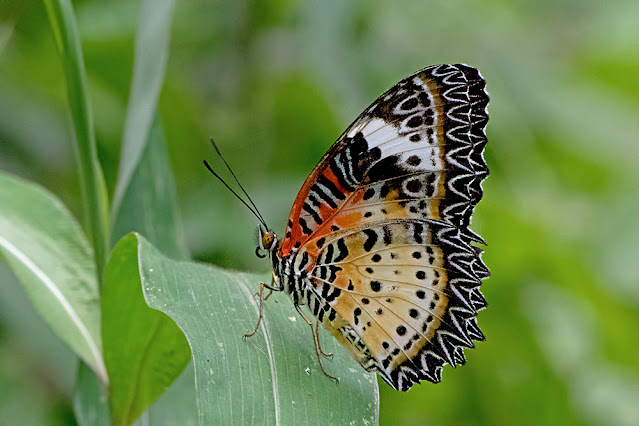
Photo taken at Huay Mark Liam Hot Spring, Chiang Rai, Thailand ♀ 420m a.s.l.

Like its close relative species C.biblis, this butterfly is common and appears throughout most of the region. It too exhibits strong sexual dimorphism. The difference between the sexes is principally in the colour and although there are some variations in the markings they are minimal. This butterfly loves the sun and is a fast and strong flyer. It regularly settles on vegetation or stops to suck nectar from flowers.
Multivoltine with seven or eight broods per annum. The larvae are gregarious throughout all instars and are very conspicuous. The
colouration of the larvae indicates to potential predators that they
are unpalatable. This unpalatability derives from organic compounds
ingested by the larvae, from their host plants. When handled they will sometimes exude a noxious odor generated from these compounds. It is thought that the unpalatability is also passed on to the adult butterfly.
Synonyms and previously used names: Papilio cyane
Taxonomy: Animalia - Arthropoda - Insecta - Lepidoptera - Nymphalidae - Heliconiinae - Cethosia - cyane
Regional subspecies: C.C.cyane (India, Bangladesh), C.c.euanthes (Myanmar, Thailand, Laos, Cambodia, Vietnam, S.China, Malaysia, Singapore)
Regional Distribution: India, Nepal, Bhutan, Bangladesh, Myanmar, Thailand, Laos, Cambodia, Vietnam, China, Malaysia, Singapore, Indonesia
 |
| Doi Suthep-Pui National Park, Chiang Mai, Thailand ♂ 460m a.s.l. |
Habitat: Cethosia cyane inhabits forests edges, wastelands and other open areas, as well as urban parks and gardens. Low to moderate elevations up to 1200m a.s.l.
Flight time: all year depending on location Wingspan: 60-80mm
Life History: egg 5-6 days instar 1 2-3 days instar 2 2-3 days instar 3 2-3 days instar 4 3-4 days instar 5 5-6 days pupa 7 days Total egg to adult 26-32 days
All times are approximate and can vary depending on the season and on the host used.
Larval Hosts: Adenia heterophylla, Adenia pierrei, Adenia macrophylla, Passiflora caerulea, Passiflora foetida, Passiflora incarnata, Passiflora laurifolia, Passiflora subpeltata (Passifloraceae), Ipomoea sp. (Convolvulaceae), Hibiscus surattensis (Malvaceae), Ricinus communis (Euphorbiaceae).
Actual host plant used depends upon location and availabilty of plant species.
Adult Food Sources: Nectar - Duranta erecta, Lantana camara, Stachytarpheta indica, Stachytarpheta jamaicensis (Verbenaceae), Wrightia religiosa (Apocynaceae), Cnidoscolus aconitifolius (Euphorbiaceae), Bidens alba, Bidens pilosa, Chromolaena odorata, Cosmos sp., Zinnia sp. (Asteraceae), Callistemon sp. (Myrtaceae), Caesalpinia pulcherrima, Delonix regia (Fabaceae), Passiflora foetida (Passifloraceae), Antigonon leptopus (Polygonaceae), Citrus × aurantiifolia (Rutaceae), Cardiospermum corindum (Sapindaceae), Platostoma axillaris (Lamiaceae). Other: mud puddling (occasional).
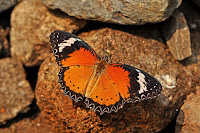 |
| Lamnamkok National Park, Chiang Rai, Thailand ♂ |
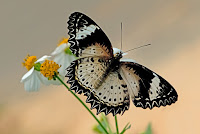 |
| Lamnamkok National Park, Chiang Rai, Thailand ♀ |
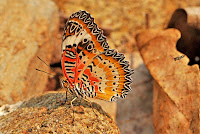 |
| Lamnamkok National Park, Chiang Rai, Thailand ♂ |
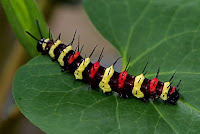 |
| late instar larva |
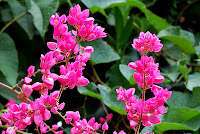 |
| Antigonon leptopus, a nectar source |
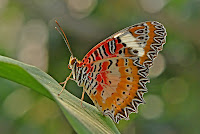 |
| Doi Suthep-Pui National Park, Chiang Mai, Thailand ♂ |
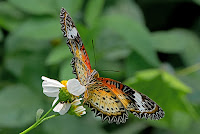 |
| Lamnamkok National Park, Chiang Rai, Thailand ♀ |
 |
| Lamnamkok National Park, Chiang Rai, Thailand ♀ |
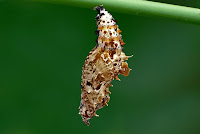 |
| pupa |
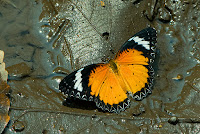 |
| Doi Suthep-Pui National Park, Chiang Mai, Thailand ♂ |
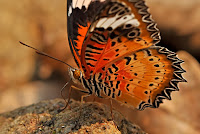 |
| Lamnamkok National Park, Chiang Rai, Thailand ♂ |
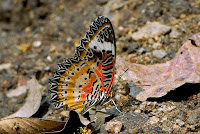 |
| Doi Suthep-Pui National Park, Chiang Mai, Thailand ♂ |
 |
| Doi Suthep-Pui National Park, Chiang Mai, Thailand ♂ |
 |
| Passiflora foetida, a larval host |
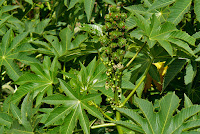 |
| Ricinus communis, another larval host |
Links to other pages in this series for species in the same subfamily
Cethosia cyane
Phalanta phalantha
Vindula erota
